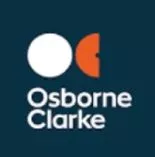When, on 27 October 2021, the government published its final report on reforming the business rates system in England, it confirmed that it had no intention of removing the mandatory business rates for charities. This conclusion was welcomed by the charities industry – hardly surprising when you consider that business rates relief is the largest tax relief claimed by charities and in 2021/22 was worth £2.38 billion to the sector.
Since then, there have been two significant developments. On 1 April 2023, the first revaluation of business rates since 2017 took place. Then in June 2023, the UK Supreme Court confirmed the conditions that a charity needs to satisfy in order to take advantage of the mandatory business rates relief.
So where are we now, and what does the future hold for charities and business rates?
What charitable reliefs are available?
Business rates are payable for any period of occupation of all or part of a business property which is shown in a non-domestic rating list currently in force, under section 43 of the Local Government Finance Act 1988.
Section 43(6)(a) of the act provides mandatory relief from business rates to occupiers which are either charities, or occupying as trustees for a charity, and are using the property wholly or mainly for charitable purposes. The relief is substantial – if the occupier satisfies these criteria, then the rating authority is required to grant the occupier a relief amounting to 80% of its business rates liability.
The relief for charities does not stop there. Local rating authorities have a discretionary power to grant further relief worth up to 20%. If a charity occupies a property in the right area and for the right purposes, it may enjoy a cumulative 100% relief from its business rates liability. Such generosity from local rating authorities is, however, fairly scarce – according to written evidence given to a parliamentary committee by the Charity Law Association, on average the value of discretionary relief enjoyed by charities is just 2.5%.
This discretionary relief can be revoked provided that at least one year's notice is given. Accordingly, even if a charity enjoys 100% relief one year, a change in policy by the local rating authority can reduce it back down to 80% subsequently.
Nevertheless, even if enjoyed without the discretionary "top up", the mandatory relief is still incredibly valuable for charities. The risk of being deprived of, or not qualifying for, the mandatory relief is of critical importance to the bottom line of most charities.
The test for mandatory relief
The UK Supreme Court has established (case below) that there are two conditions which it is necessary for charities to satisfy in order to obtain the mandatory relief:
- First condition - the ratepayer must be a charity (or trustee of a charity). For business rates purposes a charity is an institution, organisation or trust established only for charitable purposes. Ordinarily, this is a straightforward test for a charity to satisfy. The UK Supreme Court has, for example, made it clear that if the occupier is a registered charity, then it will be presumed to be a charity without any further enquiry being required.
- Second condition - the rateable premises must be wholly or mainly used for charitable purposes of the ratepayer. This will naturally include charitable activities themselves but will also stretch to activities that directly facilitate or are wholly ancillary to the carrying out of the charitable purposes. So, in the case of a charity's head office, even though the direct charitable activity may not occur there, the charity occupier could still assert that it is entitled to mandatory business rates relief on the basis that the management function undertaken from the office "directly facilitates" the operation of the charity. This condition is a question of fact and not of charity law.
It is also worth noting section 64(10) of the Act, which provides that a property will be treated as being used for charitable purposes if at the time it is wholly or mainly used for the sale of goods donated to a charity and the proceeds of such sales (after deduction of expenses) are applied for the purposes of a charity. Therefore care needs to be taken if the charity buys in goods for sale alongside donated items. In that case, the charity may need to provide evidence to the local authority that the property is mainly used to sell donated goods.
Nuffield Health case
On 7 June 2023, the UK Supreme Court released its judgment in the case of London Borough of Merton Council v Nuffield Health Ltd and held that the ratepayer, Nuffield, had used its premises wholly or mainly for its charitable purposes and was therefore entitled to the mandatory relief and an 80% reduction in its business rates bill.
As background, Nuffield acquired the Merton Abbey gym complex as part of the acquisition of Virgin Active in 2016. Nuffield runs more than 112 fitness and wellbeing centres and is a registered charity established "to advance, promote, and maintain health and health care of all descriptions and to prevent, relieve and cure sickness and ill health of any kind, all for the public benefit". This is primarily pursued through the provision of gym facilities. The majority of services were restricted to fee-paying members, but some limited services were offered to non-members.
It is well established that a charity must be established for exclusively charitable purposes and the nature of the charity's purposes must be capable of benefitting the whole community. The first limb is generally recognised and set out in the Charities Act 2011. The Charity Commission provided guidance on the second limb, namely it must benefit the community at large, and those who benefit must be sufficiently numerous and identifiable to constitute a section of the public.
The local rating authority, the London Borough of Merton, had initially granted relief, before deciding that that the terms of admission for the gym excluded less well-off residents and so did not satisfy the "public benefit" condition for charity relief.
Supreme Court decision
The Supreme Court held that Nuffield "plainly uses the Merton Abbey gym for the direct fulfilment of those charitable purposes" because when it is "viewed overall" it satisfies its obligations as a charity even if, at the Merton Abbey gym, access is not available to those of reduced means. In short, it meets the two conditions necessary to satisfy the test for the mandatory 80% relief.
The court clarified that while charities must not exclude the poor, if a charity has multiple locations, "the rich may be served in some locations and the poor in others". Nuffield's purposes are "irrebuttably presumed all to be charitable, in all the places where they are carried on" and therefore satisfy the public benefit test.
Impact of the Nuffield decision
By confirming that charities will continue to be eligible for relief if they use the premises in question wholly or mainly for their charitable purposes, the Supreme Court has given clarity to both ratepayers and rating authorities. The decision has also provided reassurance to charitable institutions as it highlights the objective (rather than subjective) nature of the "public benefit" test, which is assessed as a question of fact.
In the aftermath of the pandemic and given the continuing struggles of high streets, it has become commonplace for property owners to reduce their exposure to business rates liability on vacant units (when empty rates relief expires after three or six months) by encouraging charity lets. Doing so also encourages additional footfall to the area which, it is hoped, strengthens the prospects of other retailers maintaining their presence there.
Therefore the Nuffield decision will be welcomed by property owners because it reinforces the status quo and ensures that charity lets will continue to be attractive to landowners. It should also reduce the concerns that some charities may have had over entering into leases where their potential liability for business rates could be radically altered due to judicial decisions.
Practical considerations
Ultimately the principal issue will be ensuring that the appropriate business rates reliefs are being applied to charity-owned properties. This will usually involve checking that the local rating authority is aware of the charitable status of the entity owning the property and ensuring that the mandatory business rates relief and any other relevant discretionary reliefs are being applied.
With the latter, charities and their practitioners should seek to understand what (if anything) they can do to make themselves eligible for additional discretionary relief. Naturally, if there is a dispute as to the eligibility of the property in question, the charity is entitled to challenge that decision and, if necessary, litigate to ensure that the correct relief is applied.
For local rating authorities, similar consideration should be given to ensuring that the correct reliefs are being applied. Correct accounting now should avoid costly and unexpected repayments later so a regular audit of the occupation and use of charitable properties would be prudent.
The future
Against a backdrop of economic uncertainty and straightened local authority budgets, it is anticipated that local authorities will continue to seek to close down perceived loopholes and remove lacunas in the law in order to maximise their own revenue from business rates. We can expect continued scrutiny to be applied to the legality of rates mitigation schemes and, given the values at stake, we would anticipate that such schemes will be challenged before the courts in due course.
As for legislative intervention, we can expect movement from the government in relation to business rates enforcement generally. As part of the Spring Budget 2023, the government announced an intention to consult on business rates avoidance and evasion. That consultation was launched on 6 July 2023. The consultation will focus on a variety of factors including:
- specific measures to reform empty property relief;
- gathering evidence on wider avoidance and evasion practices within the business rates system; and
- seeking views on whether billing authorities have sufficient powers and information to combat them.
Responses were required by 28 September 2023, so while we have already seen considerable developments on business rates in 2023, there is still more to come.
An earlier version of this article was originally published with Property in Practice - The Law Society in the September edition.
This topic was explored as part of our business rates and capital allowance focused webinar. You can view the recording for more on legal and practical steps to mitigate financial overheads across property portfolios.
The content of this article is intended to provide a general guide to the subject matter. Specialist advice should be sought about your specific circumstances.



